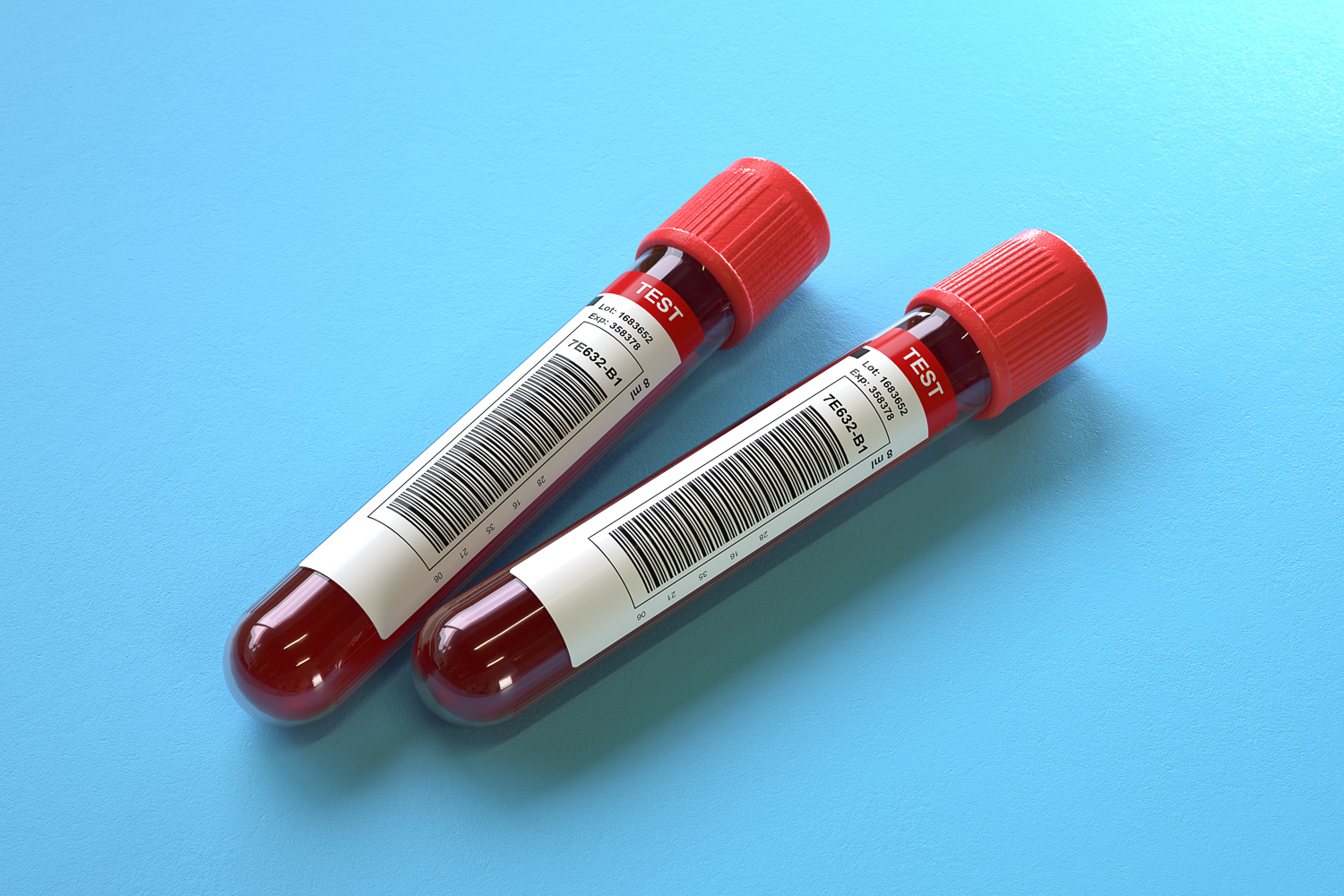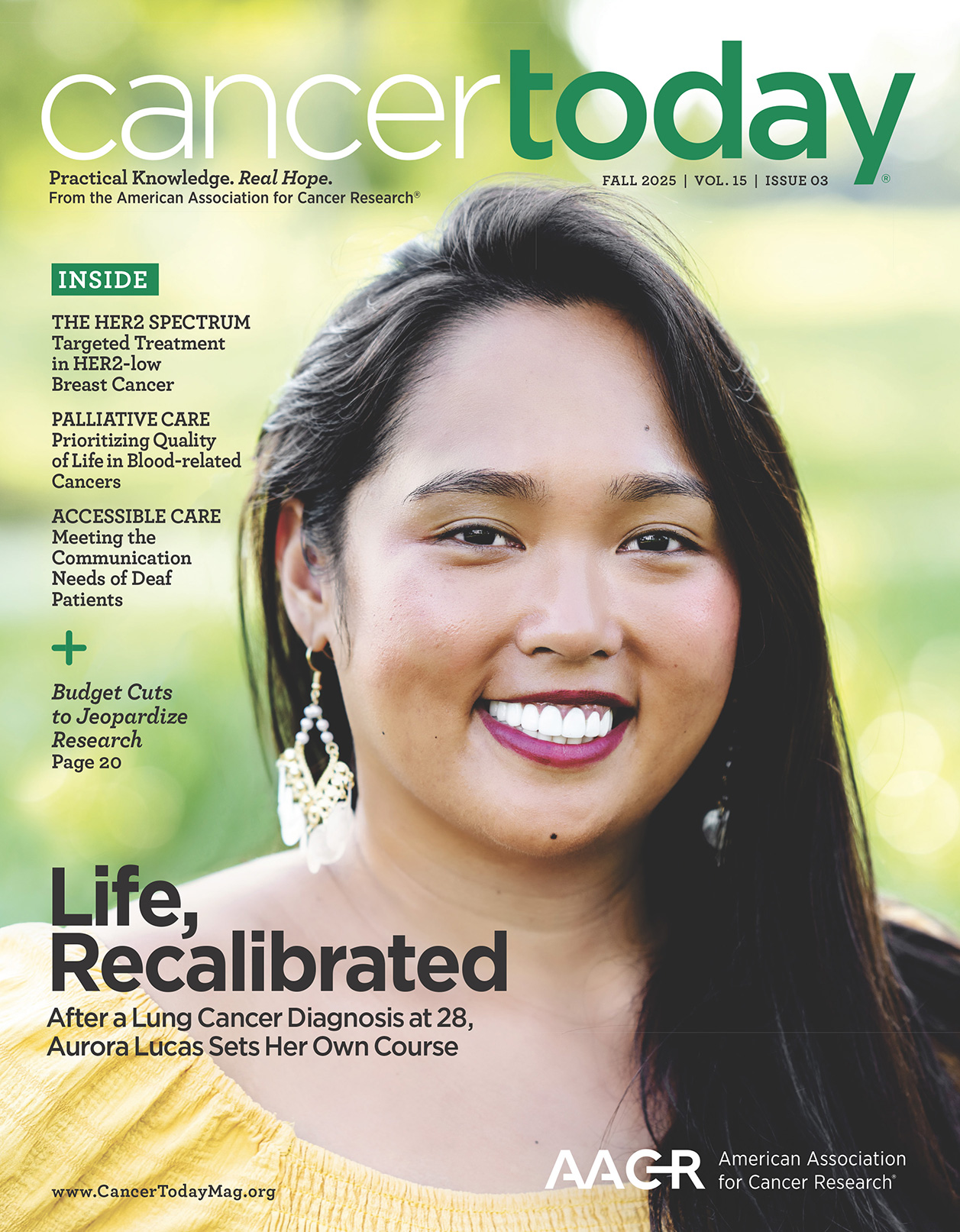PATIENTS EXPERIENCED longer survival and more time without cancer progressing when doctors used both liquid biopsy and traditional biopsy on tumor tissue to select tailored treatment, according to findings from the ROME study. Though treatment based on biomarkers detected in either blood or tumor tissue, but not both, were also associated with higher survival than standard of care in some cases, the largest increase in survival was in patients where the results of both tests agreed.
The findings, presented April 29 at the American Association for Cancer Research (AACR) Annual Meeting 2025 in Chicago, demonstrate the value of both tissue- and blood-based tests in identifying mutations in the cancer genome that can be targeted with treatment, but they highlight ongoing questions about choosing the best testing strategy for patients. (The AACR publishes Cancer Today.)
The ROME trial enrolled 1,794 people with solid tumor cancers that were advanced or metastatic. The patients, who were on their second or third line of treatment, provided both tumor tissue samples and blood samples for tests using next-generation sequencing, a process that looks at the DNA of the cancer cells. The results were analyzed by a molecular tumor board of doctors from different disciplines who interpreted the results and made treatment decisions in cases where the liquid biopsy and tissue biopsy did not align.
The tests found genomic alterations linked to specific treatments in 400 participants. About half of those patients had concordant results, meaning the tumor and liquid biopsies identified the same genomic alteration to guide treatment. In addition, alterations that could be targeted with treatment were found in 34.7% of those patients in tumor testing alone and in 16% only in liquid biopsy results.
Guiding Treatment With Tissue and Blood Tests
Participants with targetable mutations were randomly assigned to get standard care chosen by their doctor or tailored treatment based on the genomic biomarker found through one or both of the biopsy tests.
Cases with concordant results showed the largest benefit for patients given tailored treatment, who had longer survival without cancer progressing and longer overall survival, including a 26% lower risk of death, than people given standard care. Patients with concordant results went an average of 4.93 months without cancer progressing compared with 2.8 months for those who had standard care. The overall survival average was 11.05 months and 7.7 months in tailored treatment and standard care, respectively.
Patients who were treated based on targets identified through tissue tests or liquid biopsy alone had smaller benefits or no change over standard treatment. The progression-free survival was 3.06 months in people treated based on tumor results and 2.07 months in people treated based on liquid biopsy. The overall survival was 9.93 months in the tissue-guided group and 4.05 months in the liquid biopsy group.
“The concordance may be related to the tumor expressing the same genomic alteration in different metastatic sites,” said Paolo Marchetti, scientific director at the Istituto Dermopatico dell’Immacolata in Rome, and an author on the trial. “Expanding the analyses to account for more factors, such as disease subtype, metastatic sites and biopsy location could help define a new, more effective diagnostic pathway.”
What was not seen in the results was clear guidance on picking one biopsy approach over the other. While Marchetti noted that recent advances in liquid biopsy make it seem likely to come out as the primary choice in the future, limitations remain in both blood and tumor tests.
Elaine R. Mardis, a cancer genomics researcher at Nationwide Children’s Hospital in Columbus, Ohio, and an AACR past president who moderated the discussion but was not involved with the study, noted that in some cases a cancer can change subtypes, and that these subtypes can only be detected with a tissue sample. “On the other hand,” Mardis said, “the advantage that is shown beautifully here is that we can often detect in liquid biopsy that which cannot be detected from a single, or several, [biopsy] needle passes.”
Marchetti said that this was an exploratory study, meaning it was not designed to provide statistical significance, which limits how broadly people should understand the findings. There was also a high rate of test failures and only a small number of cases with liquid biopsy biomarkers alone, he said.
Cancer Today magazine is free to cancer patients, survivors and caregivers who live in the U.S. Subscribe here to receive four issues per year.





